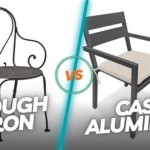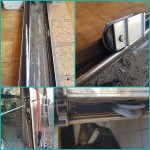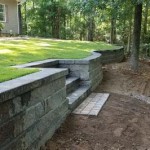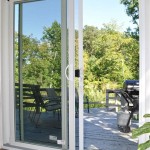Stamped Concrete Patio Cost Per Square Foot: A Comprehensive Guide
Stamped concrete patios offer an aesthetically pleasing and durable alternative to traditional paving materials. The appeal lies in their versatility, mimicking the look and texture of natural stone, brick, and even wood, all while providing the strength and longevity of concrete. However, before committing to a stamped concrete patio, understanding the associated costs is crucial for budgeting and planning purposes. The cost per square foot can vary significantly based on several factors, including the complexity of the stamp pattern, the chosen color, site preparation, and regional labor rates. This article provides a detailed examination of the elements influencing the cost of a stamped concrete patio, offering a clear understanding of potential expenditures.
Key Factors Influencing Stamped Concrete Patio Cost
Several key factors contribute to the final cost per square foot of a stamped concrete patio. These include the base concrete price, the complexity of the stamping pattern, the chosen color and any associated color hardeners, site preparation requirements, labor costs, sealing costs, and any additional finishes or treatments applied to the surface. A thorough understanding of each factor is vital for accurate cost estimation.
The foundational element of any stamped concrete patio is the concrete itself. The price of concrete fluctuates based on local market conditions, the cost of raw materials (cement, aggregate, and water), and delivery charges. Typically, concrete is priced per cubic yard. To determine the cost per square foot, one must factor in the desired thickness of the concrete slab. A standard patio slab is typically 4 inches thick. Converting cubic yards to square feet at a 4-inch thickness requires careful calculation, taking into account waste and overage for proper compaction and leveling.
The complexity of the chosen stamp pattern is a significant cost driver. Simple patterns that mimic basic brick or flagstone will generally be less expensive than intricate designs featuring multiple textures or custom details. Intricate patterns require more skilled labor and specialized stamping mats, increasing the overall installation time and, consequently, the labor cost. Furthermore, some patterns might require specialized tools or techniques to achieve the desired aesthetic, adding to the material expenses.
Color is another crucial aesthetic and financial consideration. Basic integral concrete coloring, where pigment is mixed directly into the concrete before pouring, is generally the most cost-effective option. However, more complex coloring techniques, such as the use of color hardeners or stains, will increase the material cost. Color hardeners, which are broadcast onto the surface of the wet concrete, offer a richer, more vibrant color and enhanced surface durability. Stains, on the other hand, create a translucent effect, allowing the natural variations in the concrete to show through. The selection of multiple colors or custom color blends will further escalate the cost.
Site preparation is often an overlooked but essential component of the overall cost. Proper site preparation ensures the long-term stability and integrity of the stamped concrete patio. This may involve clearing existing vegetation, removing topsoil, grading the area to ensure proper drainage, and compacting the soil to provide a solid base. In some cases, it may also be necessary to install a gravel base or sub-base to further enhance drainage and prevent settling. The extent of site preparation required will depend on the existing site conditions and the local soil type. Sites with poor drainage or unstable soil will necessitate more extensive and costly preparation measures.
Labor costs represent a significant portion of the total expense. Labor rates vary considerably based on geographic location, the experience and skill of the concrete contractor, and the complexity of the project. Intricate stamp patterns, multi-color applications, and difficult site conditions will all contribute to increased labor hours and, consequently, higher labor costs. It is advisable to obtain multiple quotes from reputable concrete contractors to compare labor rates and ensure competitive pricing. Checking references and reviewing past projects can provide insight into the contractor's expertise and quality of workmanship.
Sealing is a critical step in protecting stamped concrete patios from the elements and preserving their aesthetic appeal. A high-quality concrete sealer will protect the surface from stains, water damage, and UV degradation. Sealers are typically applied after the concrete has cured and are available in a variety of finishes, including matte, satin, and gloss. The cost of sealing will depend on the type of sealer used, the number of coats applied, and the size of the patio. Regular resealing, typically every 1-3 years, is necessary to maintain the protection and appearance of the stamped concrete surface.
Additional finishes or treatments can further enhance the appearance and durability of stamped concrete patios. These may include antiquing agents, which add depth and dimension to the stamped texture, or release agents, which prevent the stamping mats from sticking to the wet concrete. Some homeowners may also opt for specialized coatings, such as epoxy or polyurethane, to provide enhanced protection against abrasion and chemical spills. These additional treatments will add to the overall cost but can significantly extend the lifespan and improve the performance of the stamped concrete surface.
Regional and Location-Specific Price Variations
The cost of stamped concrete patios is subject to regional and location-specific variations. Factors such as the local cost of living, the availability of materials, and the demand for concrete services can all influence pricing. Areas with a higher cost of living typically have higher labor rates and material costs, resulting in a more expensive stamped concrete patio. Similarly, regions with limited access to concrete suppliers or specialized stamping tools may also experience higher prices due to increased transportation costs. During peak construction seasons, such as spring and summer, demand for concrete services is typically higher, which can also drive up prices.
The specific location of the project within a property can also affect the cost. Patios located in areas with difficult access, such as steep slopes or tight spaces, may require additional labor and equipment to transport materials and perform the installation. This can increase the overall cost of the project. Furthermore, locations with poor drainage or unstable soil may necessitate more extensive site preparation, adding to the expense. It is essential to consider these location-specific factors when estimating the cost of a stamped concrete patio.
Estimating the Total Cost and Budgeting Considerations
Estimating the total cost of a stamped concrete patio requires careful consideration of all the factors outlined above. A general estimate for a basic stamped concrete patio typically ranges from $8 to $18 per square foot. However, this is just a general guideline, and the actual cost can vary significantly based on the complexity of the project and the specific choices made. For instance, a patio with a simple stamp pattern, basic coloring, and minimal site preparation may fall towards the lower end of this range. Conversely, a patio with an intricate stamp pattern, multi-color application, and extensive site preparation may cost upwards of $20 per square foot or even more.
To obtain a more accurate estimate, it is recommended to obtain multiple quotes from reputable concrete contractors. When requesting quotes, provide the contractors with detailed information about the desired stamp pattern, color choices, and site conditions. Ask the contractors to break down the costs for materials, labor, site preparation, and sealing to provide a clear understanding of the pricing structure. Be sure to inquire about any potential hidden costs or fees that may not be included in the initial estimate.
When budgeting for a stamped concrete patio, it is wise to allocate a contingency fund to cover unexpected expenses. These may include unforeseen site conditions, changes in material prices, or additional labor requirements. A contingency fund of 10-15% of the total estimated cost should provide adequate coverage for potential cost overruns. It is also important to factor in the cost of any associated landscaping or outdoor furniture that may be desired to complement the new patio.
Finally, consider the long-term cost-benefit analysis of stamped concrete patios. While the initial investment may be higher than that of some other paving materials, stamped concrete offers superior durability and longevity. With proper maintenance and sealing, a stamped concrete patio can last for decades, providing a durable and aesthetically pleasing outdoor living space. The low maintenance requirements and resistance to weathering and wear can result in significant cost savings over the long term, making stamped concrete a worthwhile investment.

Guide How Much Does Stamped Concrete Cost

Guide How Much Does Stamped Concrete Cost

How Much Does It Cost To Put In A Stamped Concrete Patio

How Much Does Stamped Concrete Cost Network

How Much Does A Stamped Concrete Patio Cost

Stamped Concrete Cost

How Much Does A Concrete Patio Cost 2024 S

How Much Does Stamped Concrete Cost Network

2024 Concrete Patio Cost Average To Pour A Angi

How Much Does A Concrete Patio Cost 2024 S
Related Posts








